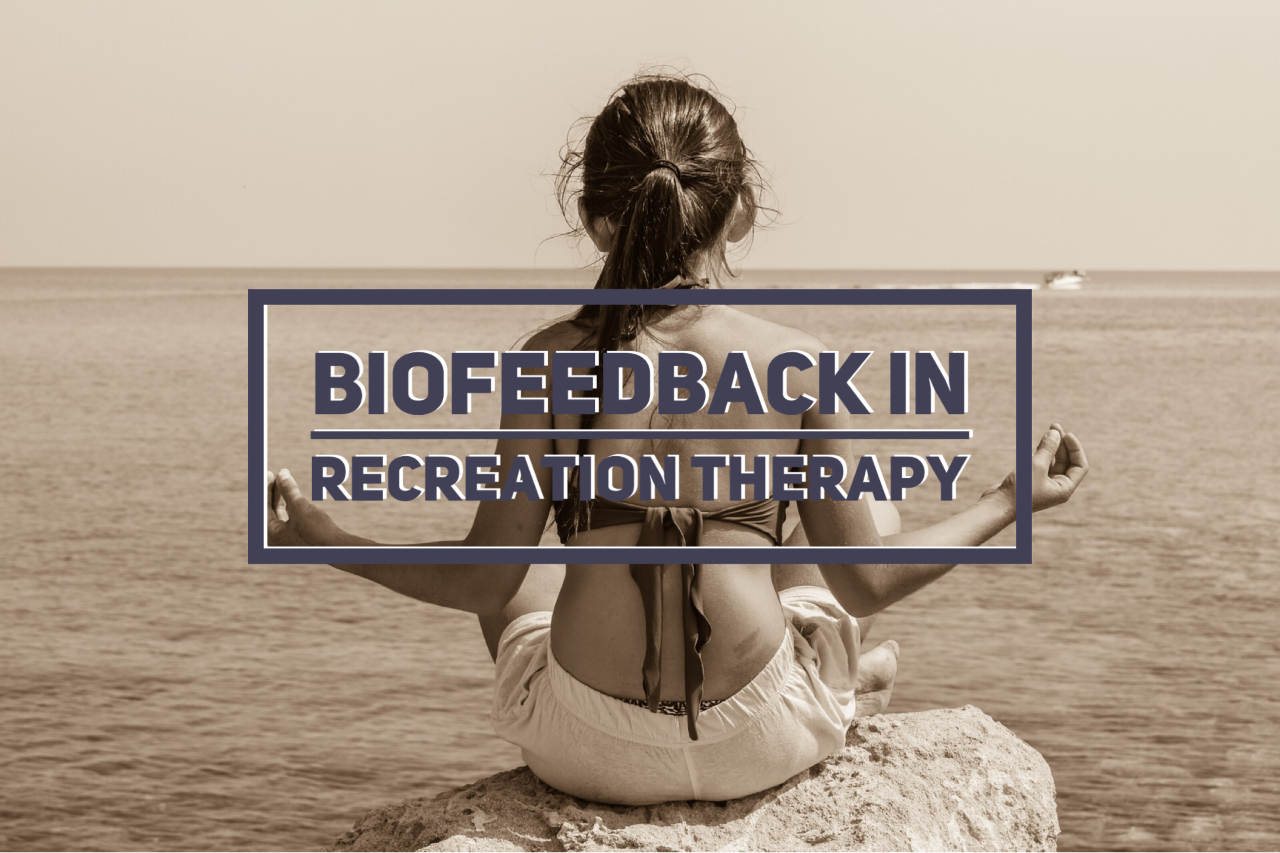Biofeedback is a technique that utilizes mindfulness of physiological functions and measures the effect of self-regulation techniques. Biofeedback monitoring could include; blood pressure, heart rate, skin temperature, and brain waves.
Biofeedback can be used to treat multiple symptoms associated with anxiety, depression, chronic pain, muscle tension and other symptoms that coincide with physiological impairment.
The use of biofeedback is vast and can be used as a technique to monitor the effectiveness of interventions utilized in Recreation Therapy as well s other professions.
Ways to monitor biofeedback include;
- Heart rate. Sensors are placed on your chest, lower torso or wrists use an electrocardiograph (ECG) to measure your heart rate and how your heart rate varies.
- Brain waves. This type uses scalp sensors to monitor your brain waves using an electroencephalograph (EEG).
- Breathing. During respiratory biofeedback, bands are placed around your abdomen and chest to monitor your breathing patterns and respiration rate.
Interventions used in Recreation Therapy could include;
- Progressive muscle relaxation
- Deep breathing exercises
- Journaling
- Painting
- Crafting
- Exercise
- Yoga
- Mediation
To monitor the effectiveness of the intervention being applied, a variety of physiological functions will be monitored when stress is present and when intervention is applied.
This allows for the patient/participate to understand the physiological effects of the activity on their body and further utilize coping mechanisms to promote self regulations of symptoms.

